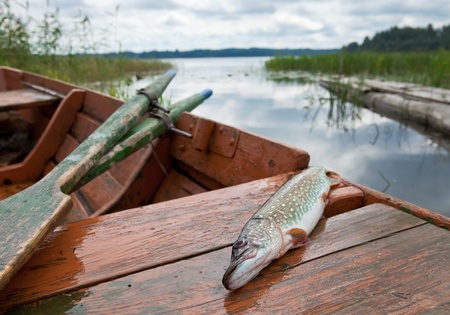Understanding Urban Barbel: Species Overview and Habitats
Barbel, scientifically known as Barbus barbus, are an iconic freshwater species cherished by anglers across the UK. Traditionally associated with rural stretches of rivers such as the Trent, Severn, and Thames, these powerful fish are now increasingly found thriving in urban waterways. The barbel’s reputation for strength and spirited fights makes it a prized catch, yet its presence in city rivers introduces unique dynamics to both fish and fishing strategies.
Urban river systems present distinct challenges and opportunities for barbel populations. These environments are often subject to fluctuating water quality, altered flow regimes, increased siltation, and habitat fragmentation due to infrastructure like weirs and culverts. Despite these pressures, barbel have demonstrated remarkable adaptability. Their streamlined bodies enable them to navigate fast-flowing waters common in engineered channels, while their tactile barbels—whisker-like sensory organs—help locate food among gravel beds or debris-laden substrates.
Behaviourally, urban-dwelling barbel may exhibit altered feeding patterns compared to their rural counterparts, responding to changes in water clarity or increased human activity along riverbanks. They often favour deep pools adjacent to faster runs or seek refuge beneath overhanging structures such as bridges and canalised embankments. Adaptability extends to their diet too; urban barbel will opportunistically feed on a wide range of natural prey and discarded food items entering from surface runoff or littering.
Understanding the habitats barbel prefer within city rivers is crucial for targeting them successfully. Look for areas where natural features such as submerged roots or marginal vegetation remain intact, offering shelter and food. Even amidst concrete and steel, patches of gravel or rubble can become important spawning grounds or feeding zones. Recognising these microhabitats—and how barbel use them throughout changing seasons—forms the foundation for effective urban angling tactics.
Urban River Challenges: Pollution, Pressure and Limited Access
Barbel fishing in the UKs urban rivers is a test of both patience and adaptability. City waterways present a distinct set of hurdles for anglers seeking the elusive barbel, often more complex than those encountered on rural stretches. The primary challenges revolve around water quality concerns, mounting angling pressure, competition for limited bank space, and a web of legal considerations that shape the urban angling experience.
Water Quality Issues
Urban rivers frequently suffer from pollution due to runoff, industrial discharge, and outdated sewage infrastructure. These factors can lead to reduced oxygen levels, increased turbidity, and contamination—all of which negatively impact barbel populations. Anglers must be acutely aware of local water conditions, as they directly influence fish health and behaviour. In some cases, targeted conservation efforts by local authorities and angling clubs are making gradual improvements, but progress can be inconsistent across regions.
Increased Angling Pressure
The accessibility of urban rivers means they attract a high number of anglers, especially during peak seasons. This increased pressure not only makes fish more wary but also intensifies competition among anglers themselves. It’s not uncommon to find prime swims occupied at dawn on weekends or holidays. The table below summarises the typical pressures faced:
| Challenge | Description |
|---|---|
| High Footfall | Crowded banks with multiple anglers targeting limited hotspots. |
| Fish Wariness | Barbel become increasingly cautious due to frequent disturbance. |
| Reduced Catch Rates | Overfishing or repeated capture reduces opportunities for all. |
Competition for Bank Space
Unlike in more rural settings, urban riverbanks are often shared spaces, frequented by joggers, dog walkers, and cyclists. This multi-use environment can result in limited access to optimal fishing spots. Securing a swim may require arriving exceptionally early or being prepared to move frequently throughout a session. Urban development also means some stretches are fenced off or otherwise inaccessible due to private ownership or safety concerns.
Legal Considerations and Access Rights
Anglers must navigate a patchwork of regulations governing where and when fishing is permitted. Many city rivers fall under the control of various authorities or syndicates, each with its own set of rules regarding permits, close seasons, bait restrictions, and night fishing. Ignorance of local byelaws can result in fines or loss of angling privileges. It is advisable to consult local angling clubs or the Environment Agency before planning any session in an unfamiliar urban location.
Tactical Summary
Succeeding as an urban barbel angler requires awareness of these unique challenges. By staying informed about water quality issues, timing sessions to avoid peak crowds, adapting tactics to pressured fish, and understanding local regulations, one can maximise both enjoyment and success along the UK’s bustling city rivers.

3. Tactics for Success: British Methods and Modern Approaches
Adapting to Urban Environments
Urban rivers across the UK present a unique set of challenges for barbel anglers, from increased foot traffic to fluctuating water quality and limited access points. Achieving consistent success requires a blend of traditional British angling wisdom and contemporary techniques designed specifically for pressured environments.
Classic British Techniques
Time-honoured methods such as trotting with centrepins and free-lining meat remain highly effective, especially in clearer urban stretches where wary fish demand subtlety. Anglers often employ simple running rigs with light leads, matched to sensitive quivertip rods, allowing for delicate presentation of baits like luncheon meat, bread, or cheese paste—staples that have caught countless barbel throughout Britain’s history.
Bait Selection: The Urban Twist
While traditional favourites endure, urban barbel often respond well to unconventional offerings due to their exposure to a diverse range of food sources. Pellet and boilie tactics have gained popularity, particularly in areas influenced by baiting campaigns or commercial fisheries nearby. Spicy sausage, sweetcorn, and flavoured pellets can provide an edge where natural forage is scarce or competition from other species is high.
Rigs and Tackle: Tailored for Challenge
Tackling urban rivers calls for robust yet refined gear. Short hooklengths (8–12 inches) paired with size 8–10 hooks are effective for presenting baits close to snags and hard structures. Lead weights between 1–2oz help maintain stability in turbulent flows typical of city rivers. Advanced hair rigs and PVA bags can be utilised to deliver compact parcels of attractants directly to holding spots beneath bridges or near outfalls—prime locations for urban barbel seeking shelter and food.
Modern Innovations
Contemporary approaches include feeder fishing with groundbait mixes laced with micro-pellets and liquid attractants, ideal for drawing fish into confined urban swims. Utilising braided mainlines improves bite detection amidst debris-laden currents, while quick-change rig systems allow for rapid adaptation as conditions shift throughout the session. Night fishing has also become a viable tactic in urban settings, capitalising on reduced disturbance and the natural nocturnal behaviour of big barbel.
Ultimately, success in urban UK rivers hinges on adaptability—melding local knowledge with evolving techniques ensures that every trip offers both challenge and opportunity in equal measure.
Local Knowledge: Hotspots and Seasonal Patterns
Success in barbel fishing along the UKs urban rivers relies heavily on a deep understanding of local conditions. Unlike rural stretches, city waterways present a unique blend of challenges and opportunities for discerning anglers. Key to unlocking consistent results is the ability to identify promising swims by carefully observing barbel behaviour, adapting to seasonal shifts, monitoring fluctuating water levels, and recognising those vital features that consistently attract fish within metropolitan landscapes.
Urban Hotspots: Where Barbel Lurk
Barbel often favour stretches that offer both safety and food supply. In urban environments, these hotspots frequently include areas with:
- Bridges and Overpasses: These structures provide shade, cover from predators, and act as natural funnels for food carried downstream.
- Industrial Outflows: Warmed water or increased flow from treated outlets can attract shoals, particularly in colder months.
- Culverts and Canal Junctions: The confluence of flows creates oxygen-rich pockets and resting spots ideal for barbel.
- Weed Beds and Overhanging Trees: Even amidst cityscape, patches of aquatic vegetation or tree cover offer sanctuary and ambush points for feeding fish.
Typical Barbel-Holding Features in Urban Rivers
| Feature | Description | Why Barbel Favour It |
|---|---|---|
| Bridge Pillars | Create slack water behind them | Shelter from flow; ambush zone for food items |
| Disused Moorings | Old jetties or platforms left in place | Crumbling structure provides cover; attracts insects and smaller fish |
| Bends Near Industrial Estates | Water speed changes; often less disturbed by boats/anglers | Resting zones; access to deeper pools |
| City Park Reaches | Pockets of tranquility amid built-up areas, often with increased public feeding of birds/wildlife | Bread and food waste attracts baitfish, which in turn draw in barbel |
Seasonal Patterns: Timing Your Efforts
Understanding how seasons influence barbel behaviour is crucial in urban settings where microclimates and artificial influences can skew traditional patterns.
Key Seasonal Movements & Strategies
- Spring: Rising temperatures see barbel become more active, moving into shallower gravel runs near spawning grounds—urban weirs are prime locations during this period.
- Summer: Warmer water encourages night-time feeding. Focus on well-oxygenated city stretches where cooler inflows meet the main river.
- Autumn: Fish feed aggressively ahead of winter; target deeper holding areas adjacent to marginal snags or submerged debris common in inner-city waters.
- Winter: Seek out slow-moving backwaters warmed by industrial discharges or under bridges where temperature remains stable. Bites may be fewer but fish quality improves as larger specimens dominate prime lies.
Adapting to Water Levels and Clarity
The urban river angler must always factor in sudden changes brought about by rainfall, storm drains, or human activity. Rising water can push barbel towards the margins or into slackwater refuges behind obstacles. Conversely, low clear conditions require finesse—scaling down tackle and adopting a stealthy approach to avoid spooking wary fish habituated to high footfall and noise pollution.
Cultivating local knowledge through observation, regular visits at different times of year, and engagement with local angling communities remains invaluable. By combining these insights with tactical flexibility, anglers maximise their chances of success even amidst the ever-changing rhythms of Britain’s urban rivers.
5. Ethics and Conservation: Responsible Urban Barbel Fishing
As barbel fishing continues to grow in popularity across the UK’s urban rivers, it is crucial that anglers prioritise ethical practices and conservation efforts to ensure the long-term survival of these prized fish. Sustainable angling is not just about enjoying the sport; it involves taking responsibility for the welfare of barbel populations and their delicate habitats within city environments.
Catch and Release: Protecting Future Stocks
Catch and release has become a cornerstone of responsible barbel angling, particularly in urban stretches where natural recruitment can be limited. Anglers are encouraged to use barbless hooks, unhooking mats, and knotless landing nets to minimise harm. Handling should be kept to an absolute minimum, always with wet hands, and fish must be fully revived before release. These practices help reduce stress and post-capture mortality, ensuring more specimens thrive for future generations.
Fish Care on the Bank
The unique pressures of urban waterways—higher temperatures, lower oxygen levels, and increased pollution—mean extra care is needed when targeting barbel. Avoid fishing during heatwaves or periods of low flow, as these conditions can be particularly tough on barbel. Quick photography and immediate return to the water are advised; prolonged exposure on the bank should be avoided at all costs.
Engagement with British Conservation Initiatives
Many British anglers now actively participate in local conservation projects, such as river clean-ups and habitat restoration schemes led by organisations like the Angling Trust or local River Trusts. Reporting pollution incidents, supporting stocking programmes, and advocating for improved water quality are all ways urban anglers can make a tangible difference. By working together with environmental groups, we help ensure that urban rivers remain vibrant ecosystems capable of sustaining healthy barbel stocks.
Ultimately, ethical and conservation-minded angling is not only essential for safeguarding urban barbel populations but also for protecting the reputation and future of our sport across the UK’s cities.
6. Opportunities for the Urban Angler: Community and Future Prospects
Urban rivers across the UK are increasingly becoming hubs for dedicated barbel anglers, offering not just accessible fishing but also a sense of shared purpose and community. The very nature of city living, with its fast pace and dense population, has fostered a unique angling culture where enthusiasts come together to share tips, organise meet-ups, and support river conservation efforts. Local angling clubs and social media groups have flourished, acting as vital platforms for exchanging knowledge about urban barbel hotspots, water conditions, and responsible fishing practices.
The Growing Appeal of Urban Barbel Fishing
Urban settings offer unparalleled convenience for those who may not have the luxury of travelling to rural stretches of the Thames or Severn. With public transport links and accessible bankside pathways, even novice anglers or those without cars can easily reach productive swims. This inclusivity is drawing a diverse demographic into the sport—from young city dwellers keen to escape the digital grind to retirees looking for new challenges close to home.
Accessibility: Levelling the Playing Field
One of the most significant opportunities lies in how urban rivers level the playing field. Many city councils and community initiatives have invested in river clean-ups and improved access points, making previously neglected stretches fishable once again. Day ticket fisheries and open-access waters mean that anyone armed with an Environment Agency rod licence and a bit of local knowledge can target hard-fighting urban barbel.
Looking Ahead: Sustainability and Innovation
The future of urban barbel fishing in the UK is bright but depends heavily on sustainable practices. Angling communities are already leading by example—organising litter picks, reporting pollution incidents, and promoting catch-and-release ethics tailored to pressured urban stocks. As cities continue to evolve, so too will their rivers; new habitat creation schemes and collaborative projects between anglers, councils, and environmental groups promise healthier fish populations and richer angling experiences.
Ultimately, urban barbel fishing exemplifies how city life and angling tradition can coexist. By embracing innovation, inclusivity, and stewardship, today’s urban anglers are not only enjoying top-class sport on their doorstep but also shaping vibrant communities that ensure these opportunities endure for generations to come.

